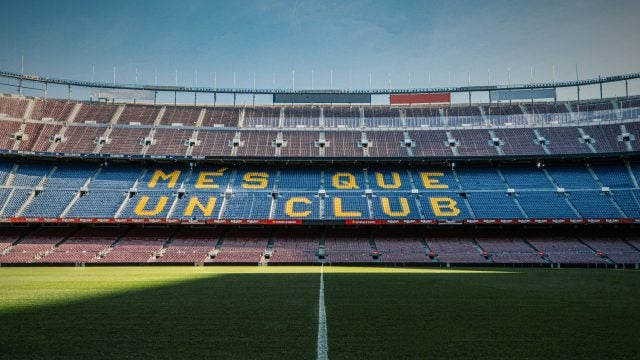Title: Georgetown Journal’s Guide to Kenyan Political Instability
In December 2007, a close election between Mwai Kibaki and Raila Odinga led to the gravest humanitarian crisis in the history of independent Kenya, a series of riots leaving hundreds of thousands displaced. What makes this outburst all the more shocking is Kenya’s litany of successes in the preceding decade. Following a budgetary crisis at the beginning of the decade, the Kenyan economy, led by a vibrant tourism sector, expanded at a rate of roughly six percent in 2005, 2006, and 2007 and, despite global conditions, maintained positive growth in 2008 and 2009.
Kenya has gained international respect for its acclaimed role in peace processes in Sudan and Somalia. Kenya has a vibrant civil society, providing citizens with alternatives to the government to advocate for change.
Political problems definitely existed, but the rapid descent of the country into chaos revealed unseen dangers. In light of the crisis, major changes to the Kenyan political system have been made through a new constitution; notably, the elimination of the prime minister, the numeric expansion of Parliament, and the introduction of a Senate. While these changes are prudent, they miss the root of the problem: the powerful institution of the presidency. Kenya’s history of colonial rulers and one-party domination, coupled with its ethnic diversity and democratic immaturity, makes a strong executive inherently destabilizing.
Kenya’s national system is defined by a strong executive in firm control of the judiciary, along with a legislature stripped of meaningful power. The civil service is highly centralized in Nairobi and Mombasa, and provincial demarcations are vertically administered and frequently revised. This concentration of power is not without advantages: World Bank indicators place Kenya above the Sub-Saharan African average in terms of Voice and Accountability, Government Effectiveness, and Regulatory Quality, all positive attributes that help Kenya function relatively well and keep day-to-day frustration with the Kenyan state at bay.
Kenya, however, is marked by regional and ethnic inequality, with access to land, a government-administered process, as the dominant factor. Decades of colonial rule left a permanent imprint on Kenya, as it did on much of Africa, with white settlers and British-allied groups doing far better than others. This continued throught the rule of Jomo Kenyatta, Kenya’s first president, whose Kikuyu ethnic group thrived on government assistance. A famous quote from Kenyatta himself reads “Kenyatta has the sugar…go lick his hands.” Direct subservience to the group in power was necessary to do well. The state is central to wealth accumulation in many developing countries, and high levels of corruption push this unfortunate trend to destructive heights.
As a result, Kenyan politics are high stakes, with economic success for specific groups as the most tangible payoff, and the presidential election as the only meaningful round. In 2007, the parliamentary elections were largely fair and unbiased, as they had been in previous years, yet the foul play in the presidential realm nearly led to a civil war. To ensure stability in Kenya, this dynamic has to change.
Eliminating corruption in the Kenyan political system is the obvious long-run solution. Unfortunately, eliminating corruption, a process generally tied to overall economic development will not happen overnight – or before the next election. Even if tangible change occurs rapidly, public perception will lag, and the presidency will continue to be viewed as a must-win prize.
With this in mind, the next best option is to boost parliamentary power. The National Assembly has displayed encouraging trends – many parties, shifting coalitions, closely proportional representation – pushing groups away from identity politics and towards issue-focused debate. Corruption in Parliament obviously exists, but, by its nature, benefits a wide range of coalition members, rather than one, tempering public animosity. The president, however, will always be a single person from a single ethnic group, the result of an election separate from parliamentary alliance-building and broad-based coalitions. Even with the reduction in power from the new constitution, the presidential flashpoint is too great to be sustainable. This is Kenya’s central challenge.
Replacing the president with a prime minister is one obvious option. The affiliation of the greatest power player in the government would be tied to a coalition, rather than to their personal party or ethnicity. Robust minority power in Parliament and flexible coalitions would help check the prime minister’s portfolio, certainly relative to that of the modern president. In combination with reforms enshrined in the new constitution, would help create an environment where Kenya’s buoyant economy could pick up speed, pushing the country towards institutional maturity and preventing outbursts of violence from devastating the nation once again.
. . .
Michael Lopesciolo is a junior in the Edmund A. Walsh School of Foreign Service at Georgetown University and co-editor for the Georgetown Journal of International Affairs’ Law and Ethics Section.
This is an archived article. While every effort is made to conserve hyperlinks and information, GJIA’s archived content sources online content between 2011 – 2019 which may no longer be accessible or correct.
Recommended Articles

This article discusses gender trolling in China’s media culture, exploring the tension between feminist activism, digital platforms, and state ideologies. It highlights how the growing digital manosphere and exclusionary feminist…

Football is one of the mirrors through which Spanish political polarization can be better understood. Despite the best efforts of political parties based in Madrid to construct a narrative that…

The assassination of former Prime Minister Shinzō Abe exposed unexpected ties between the Liberal Democratic Party (LDP) and the Unification Church, a global religious organization founded in South…